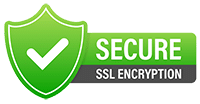The reliance on smart technology is no longer a future concept; it has become an integral part of everyday life and business operations. From homes and cities to industries and healthcare, smart technology is driving efficiency, innovation, and connectivity. This shift is powered by advances in artificial intelligence (AI), the Internet of Things (IoT), machine learning, and big data analytics. While the benefits of these technologies are immense, their adoption also raises challenges such as data privacy, cybersecurity, and equitable access.
In this extended analysis, we delve deeper into the key areas where smart technology is making a transformative impact and explore the broader implications of this global shift.
Read also: The Crucial Role of ROIs in Major Corporations
Smart Infrastructure: The Backbone of Connectivity
Smart Buildings: Beyond Efficiency
Smart buildings are redefining how we interact with our built environment. Equipped with IoT devices, these structures monitor and optimize energy usage, security, and comfort. For example, sensors detect occupancy in a room and adjust lighting, heating, or cooling accordingly, ensuring energy efficiency and cost savings.
Additionally, smart buildings enhance occupant safety with advanced fire detection systems, automated emergency responses, and real-time surveillance. These features are particularly valuable in commercial and industrial settings, where downtime or safety breaches can have significant financial and reputational consequences.
Smart Grids: Revolutionizing Energy Distribution
Smart grids represent a fundamental shift in how electricity is generated, distributed, and consumed. By leveraging IoT and AI, these grids can predict demand, reduce energy wastage, and integrate renewable energy sources such as solar and wind power. Real-time data from smart meters allows utilities to detect faults, manage peak loads, and provide personalized insights to consumers about their energy usage.
Moreover, smart grids play a critical role in supporting the transition to electric vehicles (EVs) by enabling the efficient deployment of charging infrastructure and managing the additional demand EVs place on the grid.
Smart Transportation: A New Era of Mobility
Transportation systems are becoming increasingly intelligent, with technologies like AI, IoT, and big data driving the change. Real-time traffic monitoring and predictive analytics are reducing congestion and improving travel times in urban areas. Autonomous vehicles (AVs) are poised to further revolutionize transportation by reducing human error and improving safety.
Public transportation is also benefiting from smart technology. Real-time updates on schedules, predictive maintenance of vehicles, and contactless payment systems are enhancing the commuter experience and making public transit more reliable and accessible.
Smart Healthcare: Transforming Patient Care
Telemedicine: Expanding Access
Telemedicine has emerged as a cornerstone of modern healthcare, especially during the COVID-19 pandemic. It enables remote consultations, diagnoses, and treatment plans, eliminating the need for in-person visits for many conditions. This approach is particularly impactful in rural and underserved areas, where access to healthcare facilities may be limited.
Additionally, telemedicine reduces the strain on healthcare infrastructure by minimizing patient volumes in hospitals and clinics, allowing providers to focus on critical cases.
Wearable Health Devices: Empowering Individuals
Wearable devices such as fitness trackers, smartwatches, and medical-grade monitors are revolutionizing personal health management. These devices track vital signs, sleep patterns, and physical activity, providing real-time insights to users and healthcare providers. For patients with chronic conditions, such as diabetes or heart disease, wearable devices offer continuous monitoring and early warning systems, reducing hospitalizations and improving outcomes.
AI Diagnostics: Precision at Scale
AI-powered diagnostics are setting new benchmarks for accuracy and efficiency in medical care. Machine learning algorithms analyze complex datasets, including medical images and patient histories, to identify diseases earlier and with greater precision than traditional methods. These tools are being used in areas such as cancer detection, cardiology, and radiology, reducing diagnostic errors and enabling personalized treatment plans.
Smart Education: Redefining Learning
E-Learning Platforms: Democratizing Education
The rise of e-learning platforms has transformed access to education, breaking down geographic and socioeconomic barriers. Platforms like Coursera, Khan Academy, and Duolingo offer courses on diverse subjects, allowing students to learn at their own pace and on their own schedules. This flexibility is particularly valuable for working professionals and lifelong learners.
Personalized Learning: Catering to Individual Needs
Adaptive learning technologies use AI to analyze student performance and customize educational content to meet individual needs. By identifying areas where students struggle, these systems provide targeted support, improving learning outcomes and engagement. This personalized approach is reshaping traditional classroom models and enhancing online education experiences.
AI Tutors: Bridging Gaps
AI tutors provide round-the-clock assistance to students, answering questions, offering explanations, and even grading assignments. These virtual assistants are invaluable for learners who require additional help outside of classroom hours, ensuring that no student is left behind.
Smart Cities: Creating Sustainable Urban Ecosystems
Urban Planning: Data-Driven Decisions
Smart cities use data and IoT to optimize urban planning, resource management, and infrastructure development. For instance, smart sensors can monitor water usage, detect leaks, and manage distribution systems in real-time, reducing waste and ensuring sustainable resource allocation.
Public Safety: Enhancing Security
AI-powered surveillance systems and emergency response tools are strengthening public safety in smart cities. Real-time video analytics and predictive policing help law enforcement agencies prevent crimes and respond more effectively to emergencies.
Environmental Monitoring: Fighting Pollution
Environmental sensors deployed in smart cities measure air quality, noise levels, and water pollution. This data informs policy decisions and empowers citizens to take action, fostering a cleaner and healthier urban environment.
Smart Manufacturing (Industry 4.0): The Future of Production
Automation: Boosting Efficiency
Automation is at the heart of Industry 4.0, where robots and AI streamline production processes, reduce costs, and minimize errors. Automated systems can perform repetitive tasks faster and with greater precision than human workers, freeing employees to focus on higher-value activities.
Predictive Maintenance: Preventing Downtime
IoT sensors embedded in industrial equipment continuously monitor performance and detect potential issues before they lead to breakdowns. This proactive approach reduces downtime, extends the lifespan of machinery, and lowers maintenance costs.
Supply Chain Optimization: Real-Time Management
Smart manufacturing leverages data analytics to optimize supply chains. Real-time tracking and predictive analytics improve logistics, reduce waste, and ensure timely delivery of goods, enhancing customer satisfaction and operational efficiency.
Smart Homes: Personalized Living Spaces
Home Automation: Simplifying Life
Home automation systems enable users to control lighting, heating, appliances, and security through connected devices. Voice-activated assistants like Alexa and Google Assistant have become household staples, making home management more convenient and efficient.
Security Systems: Peace of Mind
Smart security solutions, including cameras, locks, and motion sensors, provide real-time monitoring and alerts. These systems can be managed remotely via smartphones, ensuring that homeowners feel secure no matter where they are.
Energy Management: Reducing Consumption
Smart thermostats and energy monitors help households track and optimize their energy usage. By learning user preferences and adjusting settings automatically, these devices reduce utility bills and support sustainability goals.
Challenges and Considerations: Addressing the Complexities
Data Privacy: Building Trust
As smart technology collects vast amounts of data, concerns about privacy and data misuse are growing. Governments and businesses must implement robust data protection measures and transparent policies to build trust with users.
Cybersecurity: Protecting Systems
The interconnected nature of smart technology makes it vulnerable to cyberattacks. Investing in cybersecurity solutions is essential to safeguard sensitive information and ensure the reliability of smart systems.
Digital Divide: Ensuring Equity
Not all populations have equal access to smart technology, leading to disparities in education, healthcare, and economic opportunities. Bridging this digital divide is critical to ensuring that the benefits of smart technology are shared equitably.
Read also: What Smart Assistants Bring to Marketing
Embracing the Smart Future
The shift to smart technology is transforming industries, enhancing quality of life, and shaping the future of society. From smart homes and cities to healthcare and manufacturing, the integration of intelligent systems is unlocking unprecedented opportunities for efficiency, sustainability, and innovation. However, realizing the full potential of smart technology requires addressing challenges such as data privacy, cybersecurity, and equitable access. By prioritizing these issues, we can build a smart future that is inclusive, secure, and prosperous for all.














